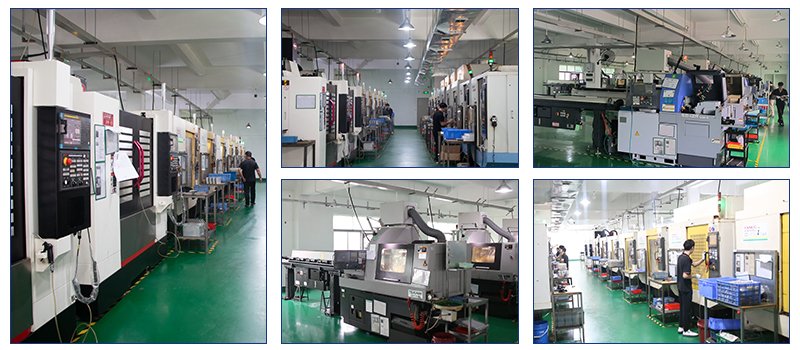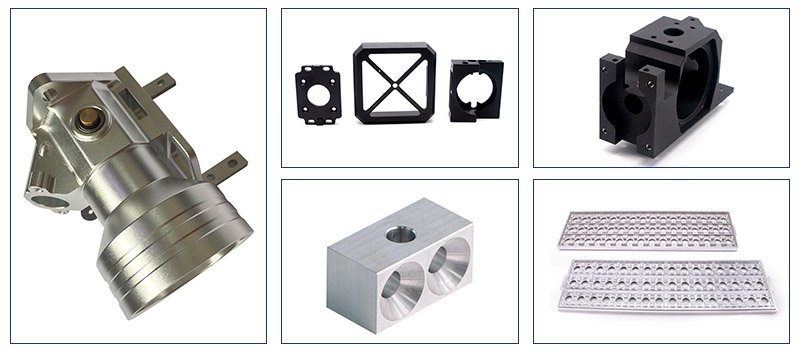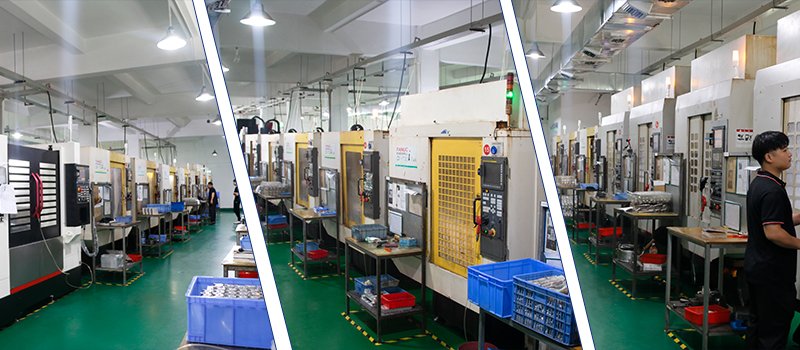In recent years, robot dogs have made huge strides in both industrial and consumer applications. From helping in disaster recovery to providing support in logistics, these agile and autonomous robots are designed to move like real dogs—navigating rough terrain, balancing on uneven surfaces, and performing tasks that require a high level of mobility and precision. However, designing and building a robot dog involves overcoming complex challenges, particularly when it comes to the high precision required for its parts. As an expert in CNC machining and its application to robot parts, I’ve seen firsthand how CNC machining technology is playing a pivotal role in meeting the stringent requirements for robot dog components.
The Role of CNC Machining in High-Precision Robot Parts
CNC machining, or computer numerical control machining, is a cutting-edge technology that allows for the precise and automated production of parts from various materials. This process is essential in creating robot dog parts CNC machining because these robots need to have incredibly accurate, durable, and functional components. From joints and actuators to body panels and sensor housings, each part of the robot dog has to fit together perfectly, allowing for smooth movement and precise functionality.
Given the complexity and precision needed, traditional manufacturing methods often fall short, especially when you’re dealing with the intricate and finely tuned parts required for a robot dog. CNC machining, however, provides the ability to manufacture parts that meet exact tolerances, ensuring that the robot’s performance is never compromised.
Why Precision Matters for Robot Dog Parts
Before diving deeper into how CNC machining meets these demands, it’s essential to understand why precision is so critical for robot dogs. Unlike stationary robots or machinery, robot dogs are built to move dynamically in unpredictable environments. Every part, from the leg actuators to the structural frame, must be meticulously designed to ensure the robot can move smoothly, respond quickly, and handle real-world challenges.
Even a small error in the manufacturing of a robot dog part can lead to mechanical failure or erratic behavior. For instance, if the servos or joints are not precisely made, the robot may struggle with stability or lose balance when walking, which could ultimately hinder its ability to perform the tasks it was designed for. This is why CNC machining plays such a pivotal role in ensuring that each part is manufactured to the highest standards of precision.
1. Precision and Tolerance Control in CNC Machining
The primary strength of CNC machining lies in its ability to work with tight tolerances. A robot dog needs parts that fit together seamlessly to enable optimal performance, and CNC machines can handle this need with ease. In my experience working with CNC machining technology, I’ve seen firsthand how its high accuracy is crucial in building the robotic components that make up a robot dog.
For example, when creating components like the joints, arms, or sensors, CNC machines can mill and turn parts to incredibly fine tolerances, often as precise as a few microns. This precision ensures that the robot’s joints and parts move smoothly, without any friction or mechanical issues. CNC machines can also produce symmetrical, uniform parts, ensuring that the robot dog maintains balance and proper coordination in its movements.
2. Material Selection for Durability and Strength
Another key factor that makes CNC machining ideal for robot dog parts is its versatility in material handling. Robot dogs often need to be built with materials that can withstand harsh environments, wear, and tear, all while maintaining a lightweight structure. Materials such as aluminum, titanium, and stainless steel are commonly used in robot dog parts, especially for the frame, joints, and critical actuators.
Each of these materials has unique properties that make it suitable for specific robot dog parts:
- Aluminum is lightweight and strong, making it ideal for the robot’s outer frame and components that need to be both durable and easy to move.
- Titanium is even stronger than aluminum and offers excellent resistance to corrosion, making it perfect for parts that may be exposed to rough outdoor environments or water.
- Stainless steel is a good option for parts that require additional strength, such as the robot dog’s internal gears and joints.
CNC machining allows for the efficient use of these materials, ensuring that each component is not only made to specification but also optimized for performance. The precise cutting, drilling, and shaping that CNC machines can achieve are essential when working with these high-quality materials.
3. Complex Geometries and Multi-Axis Machining
Robot dogs are complex machines with many moving parts, each of which may require intricate geometries to function correctly. For instance, the joints that allow a robot dog to walk are often multi-angled and require multi-axis CNC machining to produce the complex shapes needed for fluid movement.
With multi-axis CNC machines, manufacturers can create parts with complex curves, angles, and tight corners that are impossible to achieve with traditional machining methods. These machines can work on up to five axes simultaneously, making it easier to produce the precise, functional components needed for robot dog parts CNC machining. Whether it’s creating intricate leg joints, custom gear teeth, or sensor mounts, multi-axis CNC machines ensure that every detail of the part is fabricated to perfection.
4. Rapid Prototyping and Customization
In the world of robotics, speed is often just as important as precision. The ability to rapidly prototype and test parts for robot dogs is a game-changer, and CNC machining provides a level of flexibility that allows for quick iteration and customization. When you’re developing robot dog parts, you may need to test various iterations of a component, such as leg joints or drive mechanisms, to see what works best in terms of balance, strength, and functionality.
CNC machining provides an efficient pathway for prototyping and adjusting parts quickly. Whether it’s producing a small batch of parts for testing or creating one-off prototypes, CNC machining allows for faster turnaround times, reducing the time from design to finished product. This is especially crucial when developing cutting-edge technology like robot dogs, where time-to-market can be a significant factor.
5. Consistency and Quality Control
Once a prototype design is finalized, CNC machining ensures that each part is produced with the same level of precision and quality. Quality control is built into the CNC process, with every part being inspected for accuracy during and after machining. CNC machines are capable of automated inspection routines, such as coordinate measuring machines (CMM), which can check each part for conformity to the design specifications.
This level of consistency ensures that the parts for the robot dog are uniform, reducing the risk of malfunctions or errors in the final assembly. As each component is machined with precision, the entire robot dog functions as intended, with each part performing its role perfectly in concert with the others.
6. Cost-Efficiency for Small and Large Batches
Another major advantage of CNC machining is its cost-efficiency, especially when you need to produce both small batches of parts for prototyping and large-scale runs for mass production. Since CNC machines are highly automated, they can produce parts quickly and with minimal human intervention, reducing labor costs. This makes CNC machining an ideal solution for both small-volume and high-volume production runs of robot dog parts CNC machining.
For businesses developing robot dogs, whether for research, military applications, or commercial use, the ability to produce high-quality parts at scale without sacrificing precision is a key advantage. CNC machining helps to keep costs down while ensuring that each part meets the exact requirements needed for optimal performance.
Conclusion: CNC Machining is the Key to Building High-Precision Robot Dogs
Building a robot dog requires cutting-edge technology, precision, and high-quality materials—and CNC machining meets these demands better than any other manufacturing process. From creating complex geometries and choosing the right materials to ensuring tight tolerances and rapid prototyping, CNC machining is an essential tool for anyone working on robot dog designs.
At YL-Machining, we specialize in producing high-precision parts for robots of all kinds, including robot dogs. If you’re working on a robot dog project and need a reliable CNC machining partner, we’re here to help you bring your vision to life with precision, efficiency, and excellence.
Have you ever worked with CNC machining for robot parts? Let me know your experiences or ask any questions in the comments below!







